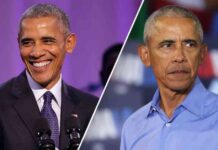Experts Examine Bias in Reporting of Political Violence
Critics have raised concerns about the perceived bias in reporting on political violence, with a focus on the portrayal of threats from both the far-right and far-left extremists. Researchers from government and taxpayer-assisted private think tanks have been accused of exaggerating the danger posed by “far-right extremists” while downplaying or ignoring the growing threats of left-wing violence.
The criticism stems from the recent assassination attempts against former President Trump and his associates, which some experts argue demonstrate the danger posed by individuals on the political left. Legal fellow at Heritage Foundation, Zach Smith, emphasized the importance of condemning violence regardless of its ideological origins. He pointed out the discrepancy in how left-wing violence is addressed compared to right-wing extremism, highlighting the need for a more balanced approach.
Smith acknowledged the condemnations of violence from some on the left but noted a lack of meaningful action to confront left-wing extremists. He expressed concern over the heated rhetoric used by some individuals on the left, suggesting that it could incite further acts of violence. Smith called for a reduction in inflammatory language and a more concerted effort to address the issue of left-wing violence.
The perception of bias in reporting is further fueled by the focus on right-wing extremism as a major threat to the political landscape, despite evidence of left-wing violence. The case of Ryan Routh, the alleged Trump gunman who had expressed anti-Trump sentiments on social media, exemplifies the complexity of political violence. Routh’s actions challenge the narrative that right-wing extremism is the primary source of violence in society.
Hans A. von Spakovsky, senior legal fellow at Heritage Foundation, criticized the emphasis on right-wing violence in government reports and assessments. He argued that left-wing movements, such as Black Lives Matter and Antifa, have been responsible for widespread violence and destruction in cities across America. Von Spakovsky questioned the portrayal of right-wing groups as the sole perpetrators of violence, highlighting the need for a more nuanced understanding of the sources of extremism.
The reports from organizations like the National Institute of Justice, the Government Accountability Office, the Anti-Defamation League, and the Center for Strategic and International Studies have focused on right-wing violence as a significant threat. However, critics argue that these assessments overlook the prevalence of left-wing violence and fail to provide a comprehensive analysis of the various forms of extremism in society.
The recent surge in right-wing extremist terror incidents has raised concerns about the escalating threat of violence from that ideological spectrum. The Anti-Defamation League’s report highlighting the increase in such incidents underscores the need for vigilance in addressing the dangers posed by extremist groups. However, the focus on right-wing violence should not overshadow the reality of left-wing violence, which has also been a persistent issue in recent years.
The Department of Homeland Security’s assessment of domestic terrorism incidents reveals a diversity of motivations behind violent actions, including racially- or ethnically-motivated extremism and anti-government sentiments. The complexity of the threat landscape requires a comprehensive approach that addresses all forms of extremism, regardless of their ideological origins.
In conclusion, the debate over bias in reporting of political violence highlights the need for a balanced and nuanced understanding of the sources of extremism in society. Addressing the threat of violence requires a holistic approach that considers all forms of extremism, including both right-wing and left-wing ideologies. By acknowledging the complexities of political violence and promoting a more objective analysis of the issue, experts can contribute to a more informed and effective response to the challenges posed by extremism.




